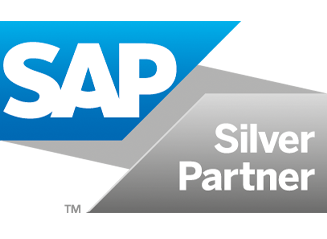Poland’s shift to mandatory e-invoicing is reshaping B2B transactions. Look into the specifics of Poland’s e-invoicing regulations and explore how SNI’s solution helps businesses stay fully compliant with the country’s requirements.
Invoicing Regulation Overview
Poland B2B e-invoicing (called e-faktura or faktura ustrukturyzowana)
After the recent VAT declaration about JPK-V7M/VDEK, the Polish government announced B2B e-invoicing via a central governmental platform would begin from January 2023 through the National Electronic Invoicing System (KseF). The newly introduced e-invoicing clearance system is similar to Italy’s SDI. In addition to e-invoicing, the logical structure was published in late 2021 on the government website.
What is e-invoicing in Poland?
Electronic invoicing involves the exchange of electronic invoice documents between suppliers and buyers. An e-invoice is issued, transmitted, and received in a structured data format, allowing for automatic and electronic processing, as defined in Directive 2014/55/EU.
KSeF introduces a real-time clearance model, which requires that each invoice be validated by the Polish Tax Authority before it can be issued to the buyer.
Validation involves real-time checks on the semantic accuracy of the invoice, including:
- Whether mandatory fields are completed
- Whether numerical fields contain valid numbers or
- Whether character limits are respected
Once an invoice is approved, KSeF assigns a unique KSeF number, confirming its official registration in the system. The KSeF number is a 36-character alphanumeric string that uniquely identifies each validated invoice within the KSeF system. and without this number, an invoice is not legally valid.
All validated invoices are stored within a central portal. Both sellers and buyers can log in to access their respective invoice records.
Invoices shared outside of KSeF—such as PDFs—must still include the KSeF number and a QR code, enabling verification within the portal. This is especially useful for accounting teams and external auditors.
What are the rules for e-invoices in Poland?
On the technical side, KSeF enables API-based integration, allowing businesses to connect their invoicing systems directly without needing to manually upload files.
This includes Automatic submission of outbound invoices and Automated retrieval of inbound invoices.
KSeF operates through three environments: Demo, Test and Production
To submit an invoice, you must first obtain a token. This token is generated using secure methods such as a qualified electronic signature, trusted signature, or electronic seal, along with the business’s NIP or PESEL number.
Once authenticated, invoices are submitted via XML format. For this, Poland uses a custom schema, with the current version being FA(2) and FA(3) planned for release.
The invoices don’t require visual stamps or signatures, as KSeF’s authentication process and time-stamping ensure compliance.
What are the requirements for e-invoicing in Poland?
Here are the required pieces of information to be included on issued invoices in Poland:
- Date of issue
- Sequential number
- Name and address of both the supplier and the customer
- VAT registration number of the supplier (with prefix)
- VAT registration number of the customer (with prefix)
- Date of supply (if different from the invoice issue date)
- Description of goods or services supplied
- Quantity of goods and measurement units, or nature of services
- Price per unit excluding VAT
- Rebate amounts (if not included in the price per unit)
- Value of goods or services supplied, excluding VAT (net sales value)
- VAT rates
- Total net taxable amount as per VAT rates or exemptions
- VAT relating to different VAT rates
When will e-invoices in Poland become mandatory?
Mandatory B2B e-invoices in Poland are being implemented gradually.
From the 1st of February 2026, e-invoicing through KSeF will become mandatory for businesses with annual revenue exceeding PLN 200 million.
Then, just two months later, from the 1st of April 2026, the obligation will extend to all other VAT-registered businesses, regardless of their revenue size.
B2C transactions are excluded from the mandate, although companies may choose to issue B2C invoices via KSeF voluntarily. And For B2G transactions, businesses can choose between the existing PEF platform or the new KSeF system.
Foreign entities without a fixed establishment in Poland are also exempt from the mandate.
|
Test Phase |
October 2021 |
|
Voluntary Phase |
January 2022 |
|
Mandatory Phase |
February 2026 (for large taxpayers) April 2026 (for all taxpayers) |
How can SNI help you?
SNI solution has its own customization tables including the required information by KSeF. By mapping these customization tables, the solution allows you to process and create e-invoices in the desired XML format and collect them in the user-friendly cockpit. After generating the e-invoice, SNI solution helps you to sign and send the e-invoices through the KSeF portal.
SNI’s solution provides complete support for both outbound and inbound invoices. Outbound invoices are transmitted to the tax authorities through official APIs or web services. Similarly, for inbound invoices (issued by suppliers to our clients), our solution automatically retrieves data at regular intervals using the appropriate APIs or web services provided by the tax authorities.
All inbound invoices are displayed on SNI’s Inbound Cockpit, a dedicated interface designed to enhance the user experience and allow efficient management. Each invoice is available in both XML and (human-readable) HTML/PDF formats, ensuring detailed insight and compliance with regulatory requirements.
SNI’s invoice reconciliation feature offers seamless validation of incoming invoices by automatically matching them with purchase orders, delivery notes, or other internal records. This feature simplifies the validation of incoming invoices, reduces manual effort, and minimizes errors thus offering a quick resolution. With enhanced accuracy and efficiency, businesses can gain better control over their financial workflows and ensure smooth operations.
Our solution integrates with our clients’ systems without the need for updates to existing system versions and is independent of SAP versions. SNI’s SAP solution is compatible with SAP ECC 4.7 and above, as well as SAP Business Technology Platform (BTP), SAP R3 and SAP S/4HANA. In addition, we provide ERP-independent solutions designed to integrate with any ERP system our clients may use.


